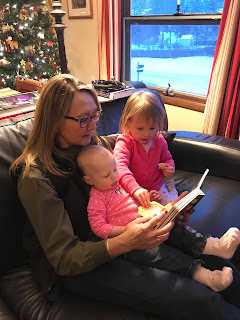While my kids were growing up our family had a boat. Nothing fancy, a decent Lund with an outboard motor. The girls enjoyed fishing with their dad and we all enjoyed tubing.
When I was growing up my family did not have a boat. We were not into water sports of any kind except for occasional summer trips to a beach on the lake my mom grew up on - not a water sport kind of lake though, a smaller lake more for fishing and duck hunting in most places.
But when we had a boat I REALLY wanted to learn how to water ski. And I tried. Year after year. I could not get my butt out of the water. I face planted and skis flew in all directions. Dad could water ski (and drop one to slalom), and at least one of my young daughters could too. But despite trying, not me.
I refused to give up. I persisted. I'm not sure who to give the credit to, but I'm pretty sure someone who'd seen me struggling told me to try getting going first and then stand up. I'd been trying to stand up as soon as the boat pulled away, and when I did, I face-planted into the water.
But one day I was ready. I crouched and squatted while the boat accelerated. I felt the skis moving over the water and I was moving with them. I slowly straightened my legs and came to a loose-kneed stand. The boat sped forward, and I sped forward too, still standing! I did it! I was water skiing!
OK, so that picture is not me. But In my mind, that's what I felt like the day I got up on water skis! I felt triumphant. I felt like I could do anything! Now, that might be an exaggeration, but I'd conquered this thing I'd been struggling to do - I stood up - I water skied!
Most of the time, struggling is not fun. But as educators we know that struggling is an essential part of the learning process. How can we help our learners to embrace the struggle and understand how important it is?
 When I was in school, many things were easy for me. I loved to read and reading and writing came easy to me. Math did not. One high school teacher (may she rest in peace...?) gave me a D in Algebra and told me, "Honey, some girls just can't do math." I thought, "Well, that explains it!" But it didn't feel good to hear. And it was not only demoralizing, it was a lie. What I needed was someone to help me believe in myself and then provide the kind of instruction that would help me build my math skills and learn how to learn in the process. Someone who would help me understand the concept of...
When I was in school, many things were easy for me. I loved to read and reading and writing came easy to me. Math did not. One high school teacher (may she rest in peace...?) gave me a D in Algebra and told me, "Honey, some girls just can't do math." I thought, "Well, that explains it!" But it didn't feel good to hear. And it was not only demoralizing, it was a lie. What I needed was someone to help me believe in myself and then provide the kind of instruction that would help me build my math skills and learn how to learn in the process. Someone who would help me understand the concept of...
Growth Mindset? You bet! I didn't have one and I sorely needed one. I was defeated by the struggle. I didn't understand that the struggle was the point, and in struggling (with appropriate scaffolding), I could learn and thrive.

Dawn Castagno-Dysart and Bryan Matera, authors of the the article "Learner persistence - the productive struggle", assert that teachers can help students understand that struggling is a natural and expected component of the learning process. It is through struggle that learning happens and growth occurs.
When they go through a struggle and come out the other side of it with new or deeper understanding, or with the ability to do something they hadn't been able to do before, learners experience a sense of accomplishment that validates the struggle itself.
The authors suggest that teachers can use the following strategies to encourage productive struggle (read details in the article):
- Questioning - ask the right questions at the right time
- Encouraging - get learners to embrace the process
- Allowing Time - allow learners time to do the intellectual heavy lifting
- Acknowledging - frame struggle as necessary and productive.
An additional strategy that I found helpful and used with students was to tell them that a task or skill was going to be hard. That way if they got it right away they could feel good about getting it quickly. If they didn't get it right away, that's OK because I'd told them it was going to be hard.
I wish teachers had said that to me. I'd love to go back and ensure that every child I taught understood the concept of growth mindset and knew that struggling is part of learning.
As teachers we have opportunities every single day to help our learners frame their struggles as opportunities for learning. We can use strategies that get them to persist and increase their stamina for the struggle, and we can help them believe in themselves.
The struggle is the point.
















